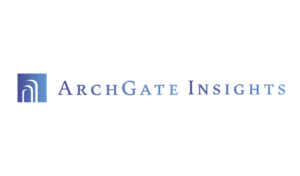
October 2023
Observations and insights into consolidation trends among nonprofit institutions.
Nonprofits Continue to Lose Ground in Public Opinion
All of us who work in or provide services to nonprofit institutions know how special they are. The ideals of service, excellence and working for the greater social good are fundamental to why people choose to work in this sector.
But leaders in the nonprofit sector need to be aware that those in government, the press and the corporate world don’t always see or interpret things in the same way. Lately, the wider societal view of our institutions is not keeping up with our collective self-image.
Higher Ed Takes it on the Chin
The most obvious manifestation of this phenomenon is the precipitous decline in the belief in the value of higher education, despite most of the evidence showing this not to be the case.
Much of this is due to the soaring cost of attending college. Headline numbers in the $60,000’s and political debate about debt relief highlight the unaffordability of a university education. Less well understood is the disconnect between soaring “list” prices and the prices actually paid by most students after institutional discounting, aka “scholarships”. By one count, 95% of students pay $15,000 or less in tuition, though that figure does not account for the ability of the most-prestigious schools to collect list prices from many students, perpetuating a stratified market by income.
The Economist declares that “The consensus view is that America has a college-affordability crisis and things are getting worse”. It then attempts to temper this view with data showing that the lifetime earnings premium for a college graduate is still around a half million dollars for both men and women in America (and about $200,000 in Britain). It goes on to point out that, despite a decline in tuition and fees at US universities of $2,000 in real terms between 2012 and 2022, a July 2023 Gallup poll shows that Americans having “a great deal” or “quite a lot” of confidence in higher ed declined to 36% this June, down from 48% in 2018 and 57% in 2015.
Despite these data, articles keep appearing with titles like “Americans are Losing Faith in the Value of College. Whose Fault is That?”.
Lengthy times to graduate, disappointing salaries despite a degree, and college debt have also contributed to this trend. There is clearly not a lot of appreciation for higher education at the moment.
It’s No Better for Health Systems
While much of the discontent with higher ed institutions centers around the value of a college degree, the societal unease with the medical system seems to be more around trust.
The good news is that in Gallup’s latest annual poll, “the medical system” came fifth in the percentage of people having “a great deal” or “a lot” of confidence among 17 institutions, trailing only small business, the military, the police—and higher education. The medical system’s 34% approval rating was two points lower than higher ed’s, and reflected a whopping decline from 44% just two years prior. In fact, the medical system had the second-largest drop since 2021, after the presidency. That has to be cause for alarm.
Jarrard’s latest survey has some bad news for leaders of nonprofit health systems, from perhaps their most important constituency. In a survey of physicians, only half of all physicians (employed and independent, for-profit and nonprofit) expressed “a great deal” or “a lot” of trust in their CEO being “honest and transparent”. But among employed physicians at nonprofit health systems, that figure was only 36%. By contrast, 51% of those employed at for-profit systems felt this way.
But wait, there’s more. Only about half of physicians trust that their executives are making good financial, operational or patient-care-related decisions. And on top of that, all of these figures are worse for female physicians.
Finally, the bad press for nonprofit health systems continues in terms of pricing and costs. A number of recent analyses published by JAMA and Kaiser Family Foundation contain examples of nonprofits having higher costs and prices than their for-profit competitors.
Bottom Line
It may be tempting to see the declining faith in nonprofit institutions as just part of the wider societal discord across the country. But it’s particularly important that both nonprofit universities and health systems reverse these trends. These institutions are fundamental to Americans’ quality of life and to the communities where they are located. Particularly with “public trust” entities like universities and hospitals, where the public sees problems, politicians and bureaucrats will not be far behind prepared to “fix” the problem for us.
What should nonprofit leaders do about this? Among other things, we would focus on the following:
- Be better. Rather than (starting with) a PR and advocacy blitz, make sure that the value proposition your organizations provide is a strong one. It is obvious that both higher ed and health care have a “list price” problem, in which people are scared off or hacked off by the headline price and are left feeling either that it’s just too expensive or that others may be getting advantageous pricing at their expense.
- THEN, go on a PR and advocacy blitz, advancing the many benefits provided by your institution and sector.
- Start with your local communities, among those you interact with every day. Show your employees and customers that you care about and value them, and give them real value for their labor or money.
The DoE Comes to “Help” Us With Higher Ed Mergers
The adage attributed to Ronald Reagan about those terrifying words (“I’m from the government, and I’m here to help”) may come to mind as new regulations have multiplied in both healthcare and higher ed, with negative implications for mergers and those who might benefit from them.
We discussed last time the increasing scrutiny the FTC is giving hospital mergers, with novel theories of cross-border anticompetitive behavior, opposition to state COPA programs, etc. Since then the agency released draft guidelines which will make more transactions subject to scrutiny, including by revising the use of the Herfindahl-Hirschman Index and by analyzing a buyer’s cumulative increase in market share from multiple acquisitions.
Now the Department of Education is beefing up its scrutiny of higher ed mergers. The rules that went into effect July 1 were reputedly devised to address for-profit buyers acquiring nonprofits, or converting to nonprofit status. But the impact of these changes will result in more closures of struggling colleges, students left in the lurch and local communities’ economic bases compromised.
The most significant change is the initiation of a two-step approval process. The key issue here is the impact on the timing of transactions. The Department will no longer conduct an initial review; instead it will only begin its assessment after the accreditor has approved the transaction. Until final approval is received, the merging institutions must be operated separately, prolonging an already lengthy and cumbersome regulatory process.
These and other changes will add greatly to the time and risk of engaging in a transaction. From the time an institution decides to investigate a merger until signing a binding agreement currently takes about 12 months if all goes pretty well. Accreditor approval recently has been in the 6-12 months range. The new DoE procedure is expected to add about a year to that.
If a school is pursuing a merger because it is financially struggling—the most common reason—this presents an unworkable delay. Since organizations often wait too long to start the process, the odds of getting through to closing a deal and integrating successfully become disconcertingly long.
The alternative in many cases is closure, which the department seems remarkably unconcerned about. Among many examples, one of the choice quotations from the department’s publicity was this:
“Whether a closure or a merger is preferred [by the department] depends on the underlying circumstances…In most cases a merger is more appropriate, but there are plenty of times when a closure is more practical.”
Often lost (or imperfectly considered) in this bureaucratic morass is who has the most to lose – students. Aren’t they really who we should be trying to help?
Bottom Line
Those institutions who wish to avoid the “practical” outcome described above should follow this advice:
- Start early: explore your options before you absolutely need to. You will have more and better ones, and be more able to survive the approval process.
- Hire competent advisors, and get regulatory, transaction and antitrust counsel involved early.
- Be clear about your transaction objectives, with as much specificity and measurability as possible. Demonstrating that a proposed transaction beneficially meets the needs of both partners and their constituents will be vital in the approval process.
- Plan ahead for the increased antitrust, accreditor, DoE and state scrutiny that will surely occur
- Move smartly through the process, making timely decisions. No deal gets better with time, and lack of decisiveness will sap energy and prolong the process.
Thoughts? Feedback? Ideas you’d like us to explore in future Insights? Let us know at info@archgatepartners.com.



